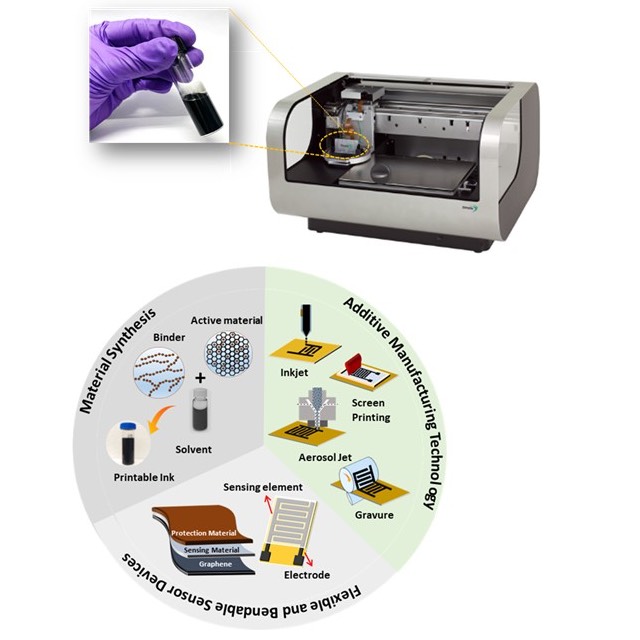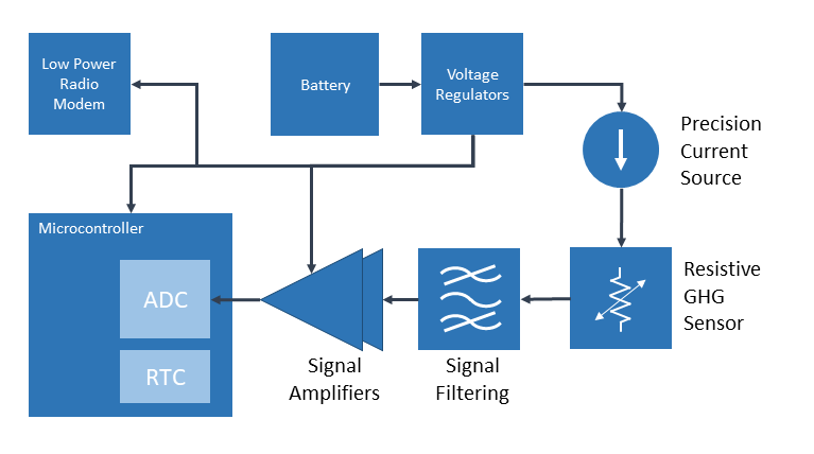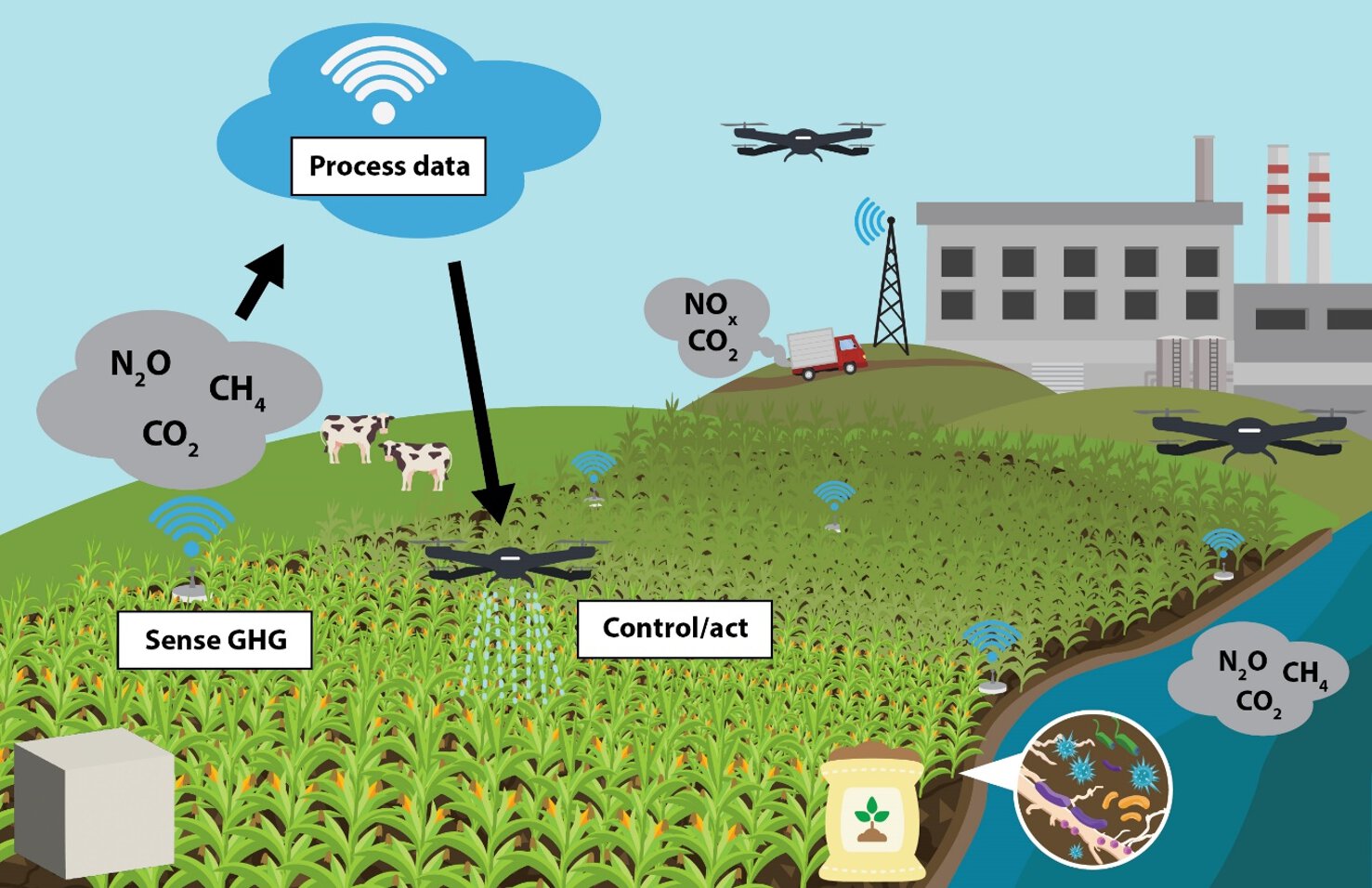Sensor Devices and Sensor Systems
Advanced Nanomaterials and Additive Manufacturing of Sensors
The sensor Materials and Devices Team is creating cost-effective, environmentally friendly nanomaterial-based inks that are:

- High-quality suspension
- Highly electrically conductive
- Tunable rheology and surface tension
- Tunable zeta potential
- Other physical parameters of need
These inks are designed specifically for additive manufacturing of sensor devices, often on flexible substrates. The use of these novel nanomaterials enhances the sensitivity and selectivity of GHG sensors. The team aims to integrate these advanced sensors into modular wireless circuit systems, enabling real-time data collection in field deployments.
In the figure above, the upper panel depicts a lab researcher showing graphene printable ink ready to be loaded into an inkjet printer. The lower panel shows components of inks and the process of fabricating sensor devices.
Sensor System Integration and Wireless Communication Testbed

The printed circuit board shown on the left was designed and assembled in-house by Peterson and his team. It features several commercially available GHG sensors and is being tested in the field to optimize parameters such as sensor accuracy, data sampling rate, power efficiency, and flexible/modular communication network. The core algorithm that enables the sensors to make intelligent decisions will be integrated into a low-power microcontroller. The results from this testing will be valuable for the development of future in-house sensors.
Spatio-temporal Data Analytics, Situational Awareness, and Cyber Physical Systems
Advanced modelling frameworks will be used to efficiently understand, interpret, and even predict the spatio-temporal GHG emission data collected from the field deployment of the sensors.

Key questions that are expected to be addressed throughout the project include:
- What is the minimum number of measurements required to obtain complete awareness of the GHG distribution across space and time?
- Where and when should we sense?
- What is the maximum number of measurements that can be lost before our GHG predictions diverge?